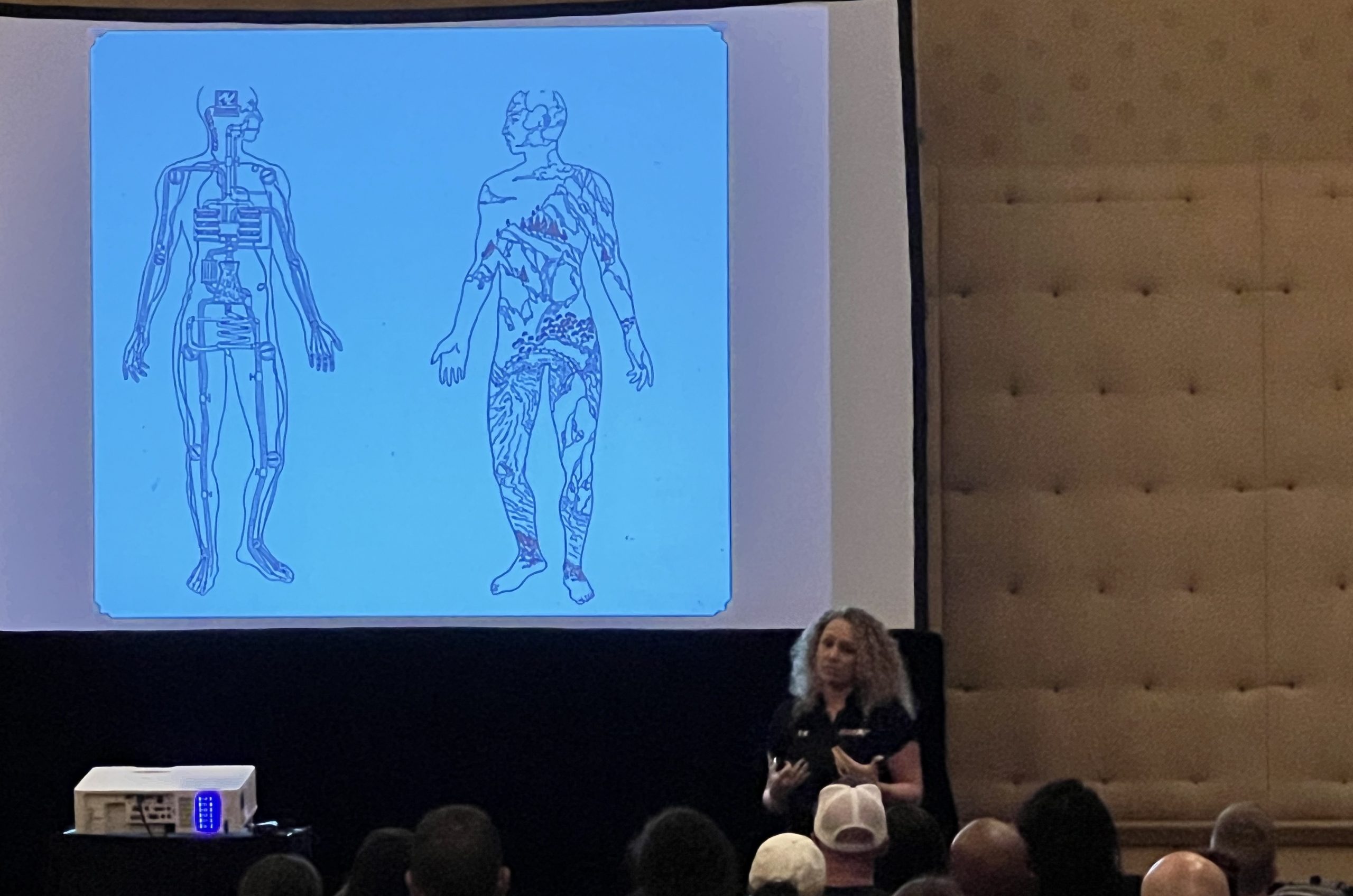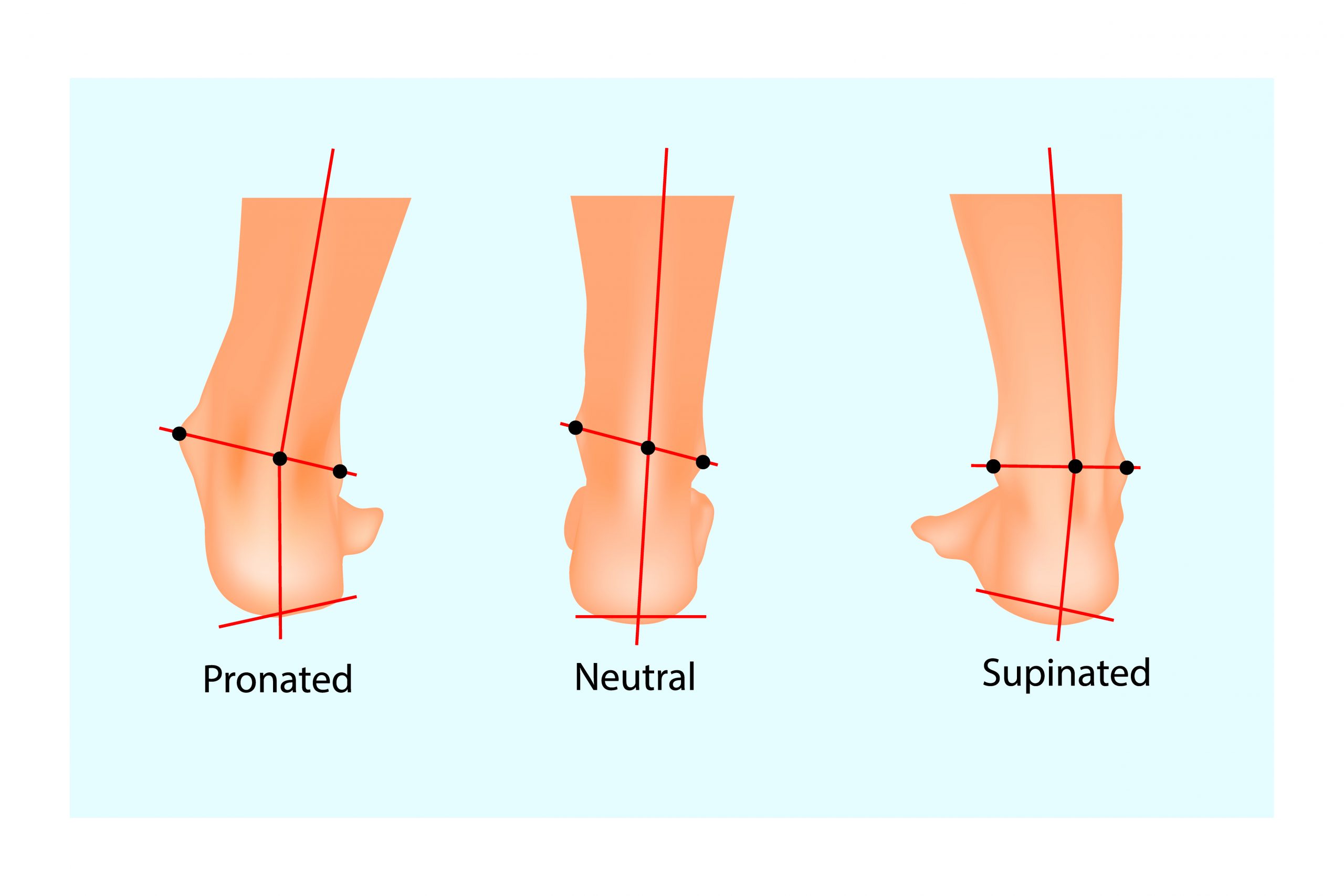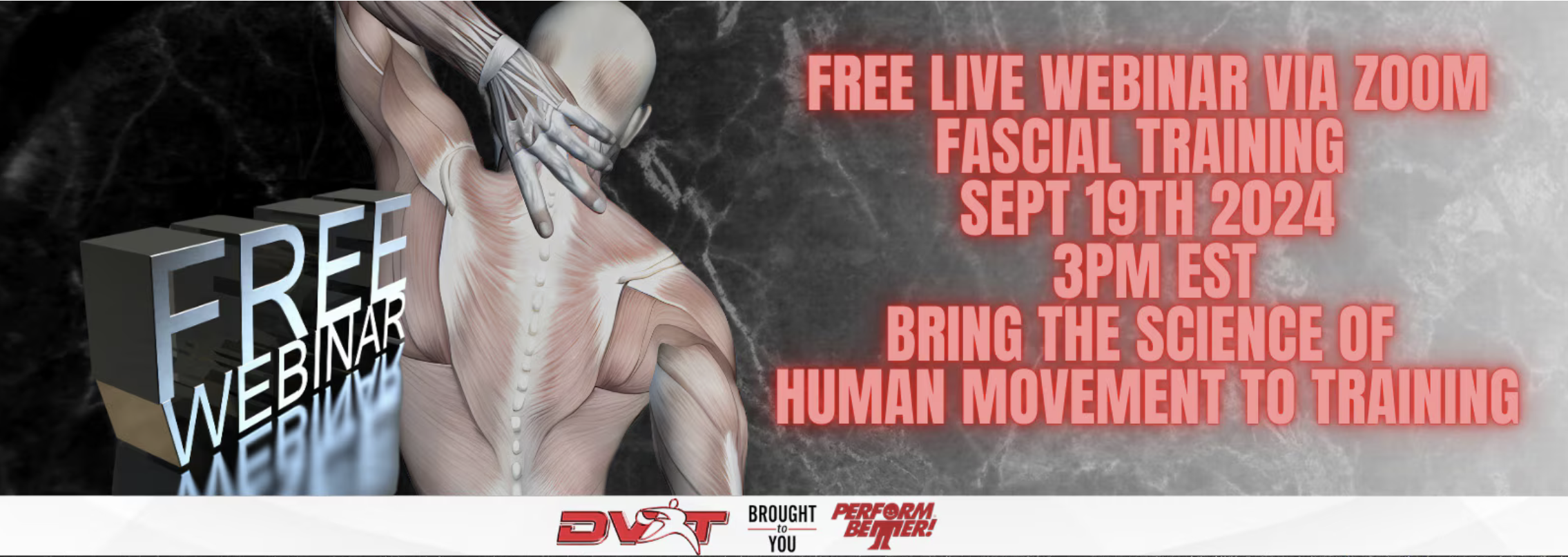Why The Feet Are Essential For Strong Adductors & Groin Pain
2024-09-29
A major theme that we keep discussing is how our bodies are an interconnected system where no part works in isolation. While it’s common to think of the body’s muscles, bones, and joints as individual components, a deeper look reveals that they function together in a complex, integrated manner. One area where this is especially true is the relationship between the feet, adductors (the muscles along the inner thighs), and the deep front fascial line. Understanding this connection is crucial for anyone interested in biomechanics, movement, and overall physical health.

As Jessica taught at the Perform Better summits, our bodies are more of an ecological system than machine.
The Role of the Feet in Movement
The feet are the foundation of human movement. They are our direct link to the ground, and how they function has a profound impact on the rest of the body. The feet consist of 26 bones, 33 joints, and over 100 muscles, tendons, and ligaments, all designed to provide balance, flexibility, and strength. The position, alignment, and movement of the feet influence not only how we walk and run but also how forces are distributed throughout the body, including the hips, pelvis, and spine.
Poor foot mechanics can lead to various issues further up the kinetic chain, impacting everything from the knees to the neck. For instance, if the feet over pronate (roll inward) or supinate (roll outward) excessively, it can cause imbalances in muscle activation and alignment, placing undue stress on other structures, including the adductors.

The Adductors: Function and Importance
The adductor muscles are a group of five muscles located along the inner thigh: the adductor longus, adductor brevis, adductor magnus, pectineus, and gracilis. In most anatomy books it will be said that the primary function is to adduct the legs, which means bringing the legs toward the midline of the body. How many times have you seen people move a lot in life and sport doing so? More commonly and more importantly, they also play a crucial role in stabilizing the pelvis and supporting proper hip mechanics during activities like walking, running, and squatting.
When there are imbalances in the feet, the adductors may have to work harder to compensate. For example, if one foot is pronating excessively, the body’s center of gravity shifts, causing one side of the pelvis to drop. This creates an uneven load on the adductors, leading to overuse, tightness, and sometimes injury. In contrast, when the feet are well-aligned and functioning properly, the adductors can work more efficiently, promoting better movement and reducing the risk of strain or dysfunction.
View this post on Instagram
Better examples of training the adductors for strength and function are drills like step down and step-ups
The Deep Front Fascial Line: A Key to Integration
To fully understand how the feet impact the adductors, we need to examine the role of fascia—an essential, yet often overlooked, component of the body’s movement system. Fascia is a connective tissue that surrounds and integrates all muscles, bones, organs, and nerves, forming a continuous network throughout the body. One of the most important fascial pathways is the deep front fascial line (DFL), which plays a crucial role in maintaining posture, stability, and movement efficiency.
The DFL runs from the soles of the feet, through the inner legs (including the adductors), up through the pelvis, spine, and diaphragm, and all the way to the base of the skull. Because the DFL connects structures from the feet to the head, any dysfunction in one part of the line can affect other areas. This is why issues in the feet can have such a significant impact on the adductors and why the DFL is a critical pathway in maintaining balance and stability throughout the body.
Feet and the Deep Front Fascial Line
Let’s explore the feet’s role in this interconnected system more closely. The DFL begins in the plantar fascia, a thick band of connective tissue on the bottom of the foot that helps to support the arch. When the plantar fascia is healthy and functioning well, it acts as a spring, efficiently transferring forces up the body. However, if the plantar fascia becomes tight, weak, or misaligned, it can disrupt the entire DFL.
For example, if someone has collapsed arches (flat feet) or overpronation, the plantar fascia may become overstretched and weakened. This not only affects the mechanics of the foot but also causes compensations up the chain, including in the adductors. The adductors, which are connected to the DFL, may tighten in response to the imbalance in the feet, leading to restricted movement, discomfort, or even injury.
On the other hand, if the feet are overly rigid or supinated, the lack of mobility can reduce the elasticity of the DFL. This stiffness can limit the ability of the adductors to move freely and function effectively, again leading to compensations and potential dysfunction.
View this post on Instagram
How the Adductors Compensate for Foot Dysfunction
When the feet are not properly aligned or functioning efficiently, the adductors may have to compensate to maintain stability and balance. This often leads to a cascade of problems throughout the body. For instance, if one foot pronates excessively, the corresponding leg may internally rotate, placing more strain on the adductors. The muscles may shorten or become overactive to help stabilize the pelvis, leading to tightness and discomfort.
This compensatory pattern can create a vicious cycle. Tight adductors can pull on the pelvis, further destabilizing the hips and contributing to improper foot mechanics. Over time, this can lead to more serious issues, such as hip impingement, lower back pain, or even knee injuries.
Why the Deep Front Fascial Line Matters
The DFL is essential for understanding how the feet impact the adductors because it provides a framework for how forces are transmitted through the body. Rather than viewing muscles as individual units that act in isolation, the DFL helps us see how different parts of the body work together as a cohesive system.
In a well-functioning DFL, the muscles, bones, and fascia all work in harmony to distribute forces efficiently and support healthy movement. The feet, as the starting point of the DFL, play a critical role in maintaining this balance. When the feet are properly aligned and functioning well, the rest of the body can move more freely and efficiently.
Practical Implications: Improving Foot and Adductor Function
Given the interconnected nature of the feet, adductors, and DFL, it’s important to address dysfunctions in any part of the system to maintain overall movement health. Here are some practical tips for improving foot and adductor function:
-Foot Mobility and Strength Exercises: Strengthening the muscles of the feet and improving mobility can help prevent over pronation or supination, which can reduce compensations in the adductors. Exercises like toe curls, arch lifts, and calf raises can strengthen the intrinsic muscles of the feet.
View this post on Instagram
Movements like physical therapist, Jessica Bento, shows can really be helpful in both stabilizing, strengthening, and progressive training of the adductors.
-Fascial Release Techniques: Using tools like foam rollers or massage balls to release tightness in the plantar fascia and adductors can help restore elasticity and function to the DFL. So can myofascial stretching and movement practices we show in our MIM system
View this post on Instagram
The relationship between the feet, adductors, and deep front fascial line highlights the complexity and interconnectedness of the human body. By understanding how these systems work together, we can better appreciate the importance of maintaining healthy foot mechanics and balanced movement patterns. When the feet are strong and well-aligned, the adductors can function more effectively, and the entire deep front fascial line can support efficient, pain-free movement. These are some of the great concepts you will learn how to apply in our upcoming 6-week online CEU Fascia Training Masterclass that you can sign-up HERE
© 2026 Ultimate Sandbag Training. Site by Jennifer Web Design.







